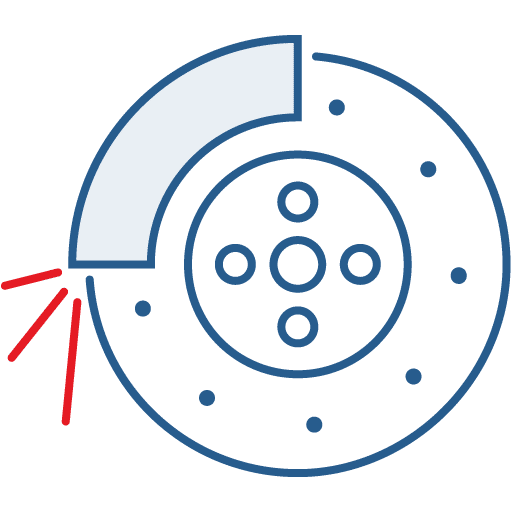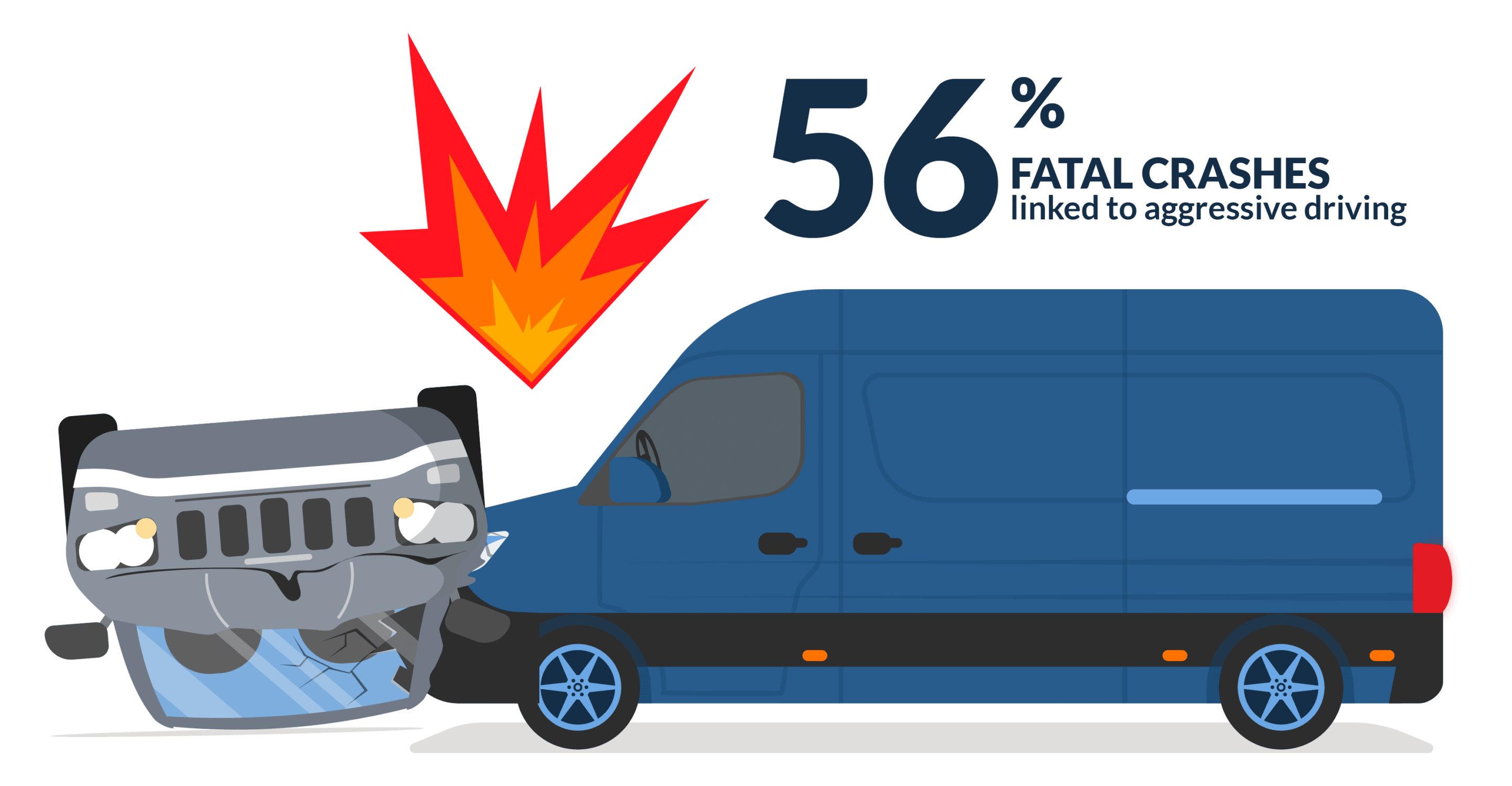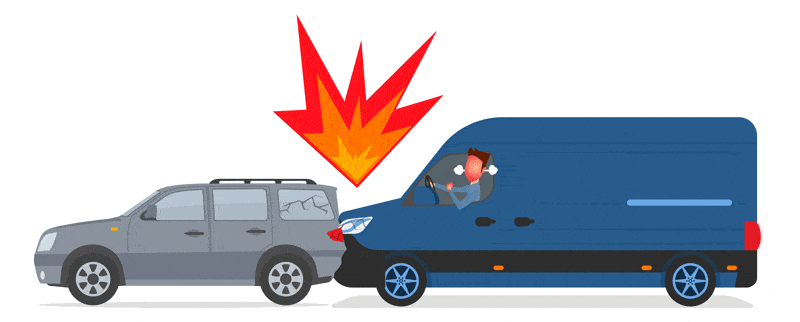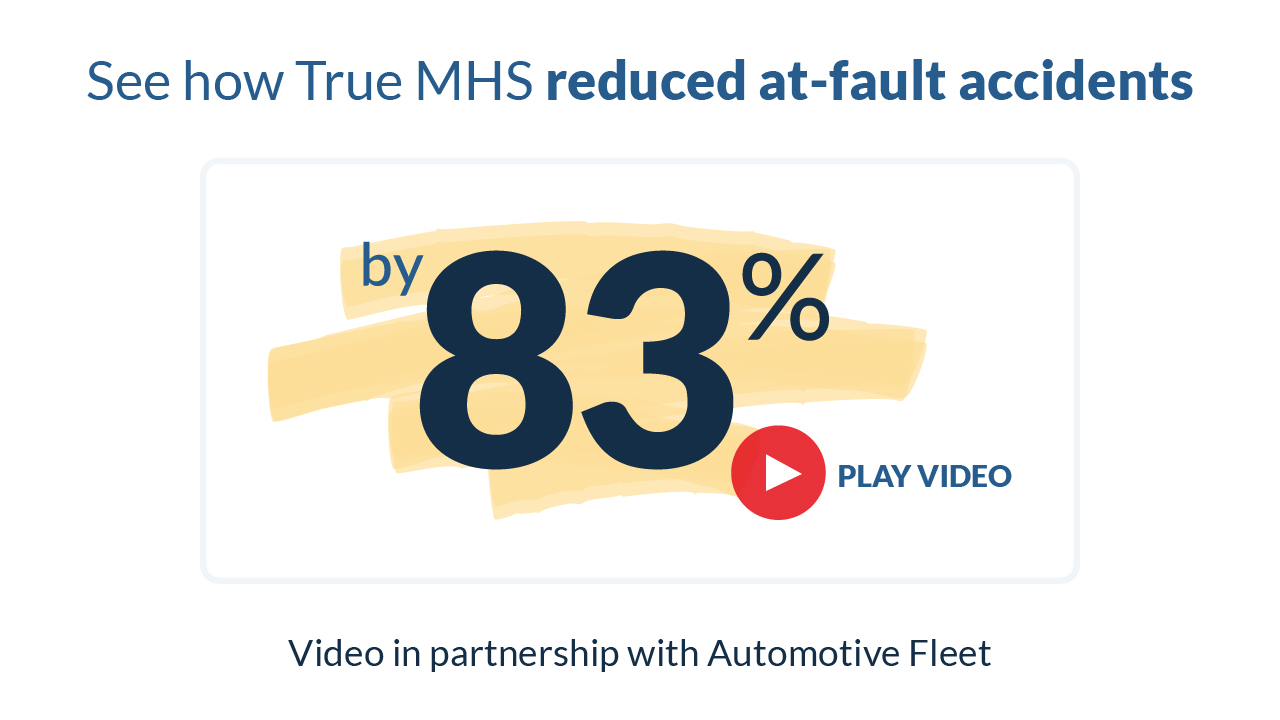
Aggressive Driving:
Using Technology to Increase Safety and Save Money
Aggressive driving is one of the leading causes of road injuries. In fact, according to the World Health Organization, road traffic injuries will become the fifth leading cause of death by 2030. For fleets, aggressive driving is costly and dangerous, can lead to increased traffic violations, greater risk of accidents, injury, expensive litigation, and increased insurance premiums.
Addressing aggressive driving is one of the top priorities of the fleet industry, and technology is helping managers and drivers improve safety, increase efficiency, and save money.
What is aggressive driving?
We’ve likely all experienced, and can easily recognize, an aggressive driver. According to the National Highway Traffic Safety Administration (NHTSA), aggressive driving is “the operation of a motor vehicle in a manner that endangers or is likely to endanger persons or property.” When a driver commits traffic offenses that endanger other people or property, they’re engaging in aggressive driving.
Aggressive driving behaviors include:

Speeding

Tailgating

Hard braking

Cutting off motorists

Not using turn signals

Improper lane changes

Illegal passing

Not yielding the right of way

Not obeying traffic signs

Racing
Aggressive driving differs from road rage or distracted driving. We’re not talking about drivers deliberately crashing into other vehicles, getting into fights with other drivers, watching cat videos on their phones, or texting while behind the wheel.
Impacts of aggressive driving
Accidents can happen to anyone, but aggressive driving significantly increases the risk. Even the most experienced, careful drivers can lose control of their vehicle when they’re angry or frustrated behind the wheel. As a fleet manager, public, driver, and vehicle protection is paramount.
A major NHTSA study found that aggressive driving was a contributing factor to 56% of fatal crashes from 2003 through 2007, with speeding ranking as the leading factor. In 2020, 53,890 drivers and motorcyclists were involved in fatal crashes linked with aggressive driving, from speeding to making an improper turn or operating a vehicle in a reckless manner. Speeding, arguably the most prominent sign of aggressive driving, is particularly dangerous and contributes to 19.1% of fatal accidents.

Speeding in a commercial vehicle can significantly impact both the frequency and severity of accidents. Fleet vehicles tend to be larger and heavier than average cars and trucks on the road. Speeding-related safety issues also directly correlate with other aggressive behaviors, such as aggressive acceleration, sharp turns, tailgating and hard braking.
Beyond safety issues, aggressive driving also has a serious impact on the bottom line through higher insurance premiums and reduced fuel efficiency. Any time one of your drivers is ticketed or causes an accident, your fleet insurance will likely rise, creating new pressures in already difficult times. Speeding, hard braking, and other aggressive driving behaviors reduce fuel efficiency and unnecessary vehicle wear and tear. Repairing or replacing vehicles sooner than necessary is a big expense.
Finally, aggressive driving can cause substantial reputational damage to commercial drivers and the fleet industry. While the vast majority of fleet drivers are excellent professionals, one aggressive driving incident can lead to increased scrutiny that damages trust and reputations.
What causes aggressive driving?
Again, most fleet drivers are dedicated professionals who perform a critical and demanding service extremely well and with safety top of mind. But drivers are also human beings who can have a bad day, or bring some of the same feelings and faults with them when they get behind the wheel. That’s not an excuse, it’s just a fact.
There are notable factors that contribute to aggressive driving. According to the Association for Psychological Science, the cover of darkness that driving at night or deeply tinted windows offers can contribute to aggressive driving. Long hours in rush-hour traffic also contribute to aggressive driving behaviors, including greater hostility, increased risk-taking and a shorter fuse.
Beyond the personal maters, the nature of fleet work can also play a role. Busy schedules, the stress of on-time delivery or service mandates and spending hours on gridlocked roads and highways can incentivize speeding and lead to cutting corners and a flash of temper.

Drivers stuck in traffic or suffering from lack of sleep are more likely to develop aggressive driving behaviors. A Harvard study found that even a small amount of sleep deprivation can lead to serious mood changes.
Too much time on the road can lead to stress, which is a leading cause of aggressive driving. According to one study, “High anger drivers drove at higher speeds in low impedance simulations and had shorter times and distances to collision.” The report adds that they were “twice as likely to crash in high impedance simulations.”
Technology to help mitigate aggressive driving
Thankfully, driver coaching and innovative technology can help fleet managers tame aggressive driving behaviors.
The key to reducing aggressive driving is to have a complete picture of each driver’s behaviors, and telematics and dashcams are the main tools to provide fleet managers this information. Fleet telematics provide crucial data on aggressive driving and other activities that impact safety and fuel use. It can monitor a driver’s speeding, hard braking, or other incidents and compare them with other drivers in the fleet. Over time, you can identify patterns to see what triggers aggressive driving—which makes it easier to identify opportunities for driver coaching and, if necessary, disciplinary action to repeat offenders.
With all of this information, fleet managers can address any driving-related issue immediately. This helps stop aggressive driving. But telematics combined with video dashcams can also protect drivers. The information collected can determine that the driver’s actions were warranted in the context of driving conditions, e.g., the driver reacted defensively to avoid a collision. GPS Insight smart dash cam solutions help boost safety and reduce accidents. One company using our smart camera solution reported that the technology helped reduce their at-fault accidents by 83% over a year.

Telematics can also help review potentially aggressive driving to identify potential fuel savings. According to the U.S. Department of Energy, aggressive driving wastes gas and lowers gas mileage by roughly 15% to 30% at highway speeds, and 10% to 40% in stop-and-go-traffic. Using driver behavior data for coaching helps reduce speeding, rapid acceleration, and harsh braking while diminishing excessive fuel use in the process. GPS Insight tools can also send alerts directly to drivers to proactively correct these behaviors.
Finally, effective telematics can also help reduce fleet insurance costs. One third-party insurance study found that fleets using GPS Insight tracking achieved a 30% reduction in claims per $100,000 in premiums.
Putting an end to aggressive driving is in the best interest of everyone on the road. Aggressive driving contributes significantly to the number of crashes, injuries, and fatalities that occur on the roads every year, and raise insurance and fuel costs for fleets. Using effective safety solutions like telematics and smart dash cams can help fleets end aggressive driving and reduce costs, improve efficiency, and protect drivers.





